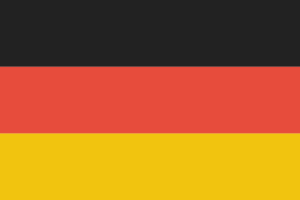Monthly Monitor - January 2023
Monthly Monitor - January 2023
The last quarter of 2022 proved to be a very strong quarter for the Gresham House, Ireland equity and multi-asset funds.
The equity funds led the way during the quarter with the Global Equity Fund and the Global Small Company Fund seeing gains of 11.8% and 8.5% respectively. The multi-asset funds also enjoyed a strong quarter with the Global Multi-Asset Fund and the Global Thematic Multi-Asset Fund finishing the quarter up 6.5% and 3.3% respectively.
December closed out a turbulent year for markets, where double digit losses were common across major asset classes. Against this backdrop our funds performed well. 
Our flagship fund, the Global Multi-Asset Fund, only fell 1.8% during the year and over the last five years has returned 23.7%. The Global Thematic Multi-Asset Fund suffered from not having exposure to the oil sector which was the best performing sector during the year. It fell 8.3% during the year but over the last five years has produced similar returns to the Global Multi-Asset Fund, up 25.4% over the period.
Our equity funds had a mixed year. The Global Equity Fund only fell 1.1%, as it benefited from exposure to large-cap value stocks such as oils and resources. The Global Small Company Fund endured a tough year, falling 25.6% as small-cap stocks underperformed.
We were not surprised by the negativity that has roiled through markets over the last twelve months. For a long time, we have been worried about the “duration bubble” within financial assets, and the potential for a different inflationary backdrop to burst this bubble. Whilst factors like the Russian/Ukrainian conflict and the continued Covid lockdowns in China did contribute to market negativity, the main factors have been the return of inflation and tighter monetary policy.
While no asset class has been spared, the pain has been most severe in the “bubble” parts of the market, such as non-profitable tech companies and assets such as bitcoin, and it wasn’t a surprise to see that the Nasdaq finished as one of the worst performing major indices during the year, down over 30%.
Bond investors also suffered during the year as yields rose across the globe. For a long time, we have viewed fixed interest bonds as a return-free risk as opposed to a risk-free return, and 2022 turned out to be the year that the market finally woke up to the risk in holding bonds.
What we didn’t expect in 2022, was the conflict between Russia and Ukraine and the impact it would have on Europe’s energy markets. The result of this was that European small-cap stocks had a tougher year than we expected despite starting the year at attractive valuation levels.
It’s fair to say that not much worked in 2022. Within the equity market, larger value stocks were the outperformers, such as energy, healthcare, consumer staples, materials and financials. Energy was the best performing sector during the year, finishing up 57%.
Outside of the equity market, the standout asset was the US dollar which appreciated 7.5% during the year, although it now appears to be on a downward trajectory, weakening for the last three months.
Heading into 2023, negativity appears to be the overriding feeling within markets. A global recession is the expectation for 2023 and it’s easy to be bearish on equity markets in the face of worsening economic data.
However, equity markets move before economic data and a mild recession is priced into markets already. The economic data has the potential to surprise to the upside as energy prices fall in Europe, the Chinese economy reopens boosting global demand, and rate hikes in the US may not push the economy into a deep recession.
Whilst better than expected economic data could be the positive surprise in 2023, a failure of central bankers to control inflation has the potential to be the negative surprise. Even though inflation is set to fall, there is a likelihood that without a deep recession it will not fall towards the 2% objective central banks are targeting. 2023 may be the year in which central banks are confronted with a choice of either accepting higher levels of inflation or pushing economies into a deep recession with very high levels of unemployment.
Our approach to 2023 is the same as ever.
Firstly, avoid the main risks we see within markets such as: high US dollar exposure, as we believe it is still overvalued, and parts of the financial markets that would suffer in the face of higher or more persistent inflation, long-dated fixed income and expensive parts of the equity market.
Secondly, invest where we see opportunities. Within equity markets the long-term opportunity remains outside the US, in sectors such as financials, energy, materials and industrials. We expect these sectors to be the leaders within the equity market through the next economic cycle. Outside the equity market, opportunities remain in asset classes that can produce returns to investors whilst offering inflation protection. We continue to find these opportunities in alternative assets such as forestry and infrastructure.
Any views and opinions are those of the Fund Managers, and coverage of any assets held must be taken in context of the constitution of the fund and in no way reflect an investment recommendation.
Capital at risk. If you invest in any Gresham House funds, you may lose some or all of the money you invest. The value of your investment may go down as well as up. This investment may be affected by changes in currency exchange rates. Past performance is not necessarily a guide to future performance.
The above disclaimer and limitations of liability are applicable to the fullest extent permitted by law, whether in Contract, Statute, Tort (including without limitation, negligence) or otherwise.
 Gresham House
Specialist asset management
Gresham House
Specialist asset management





